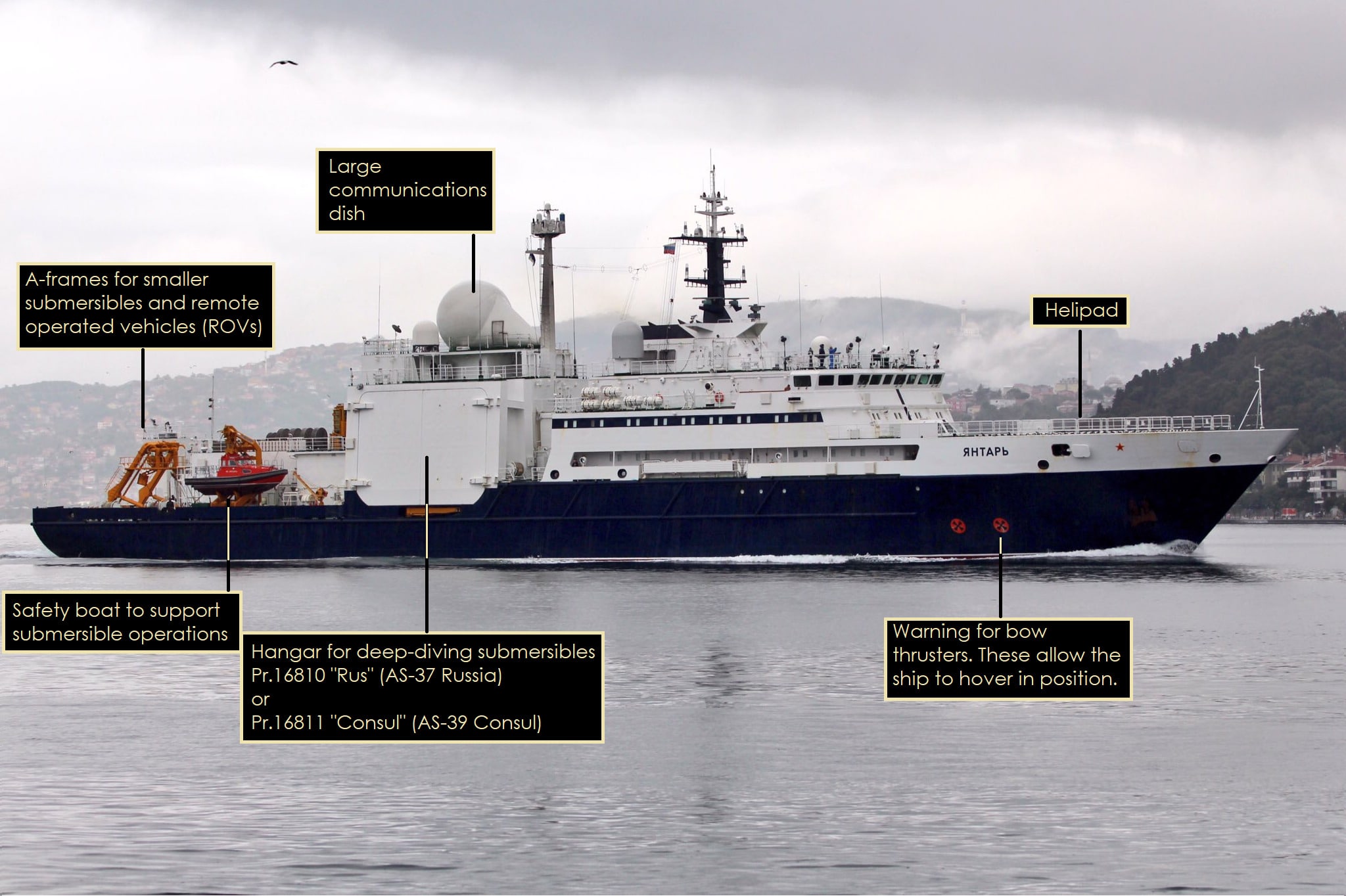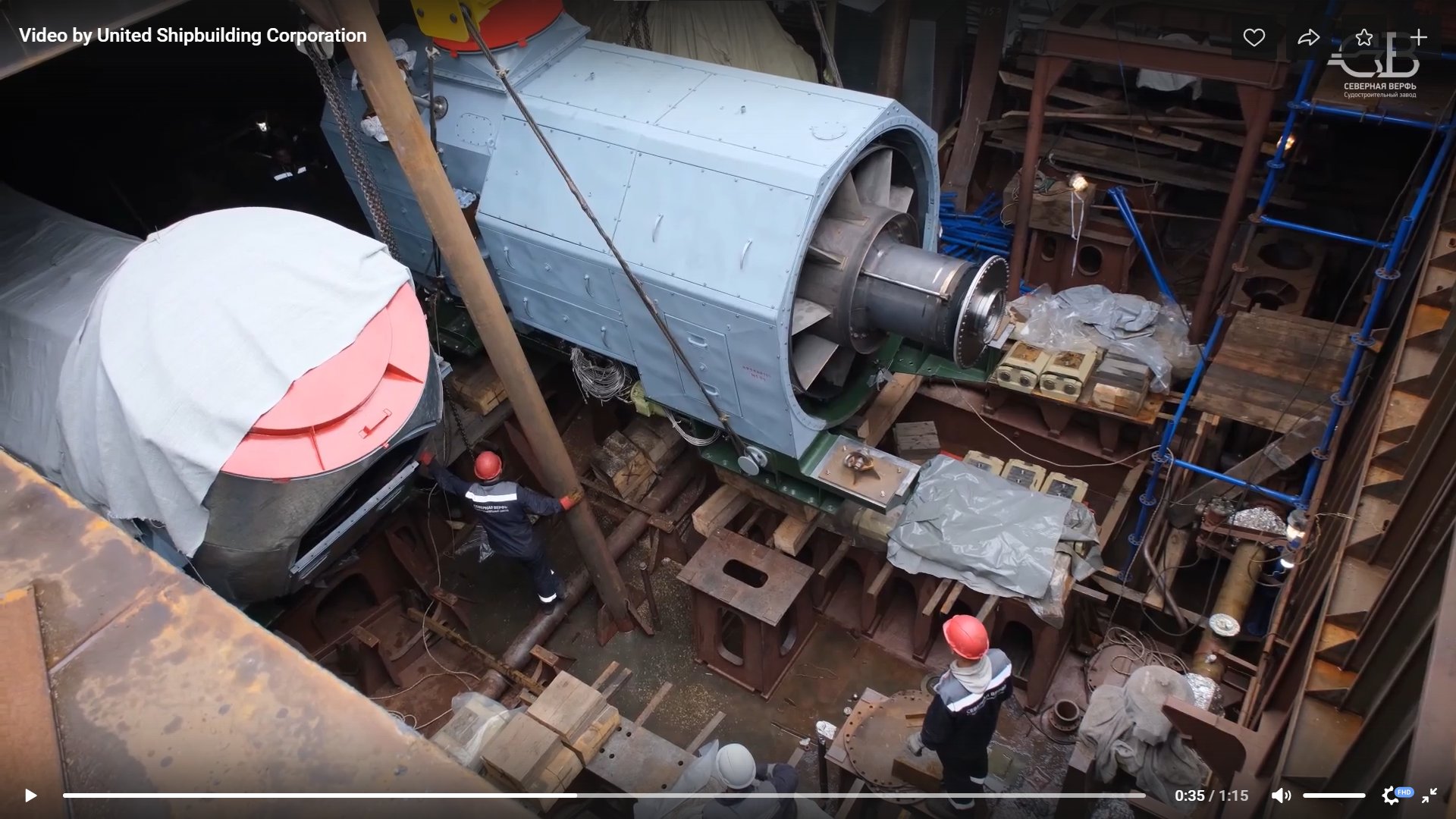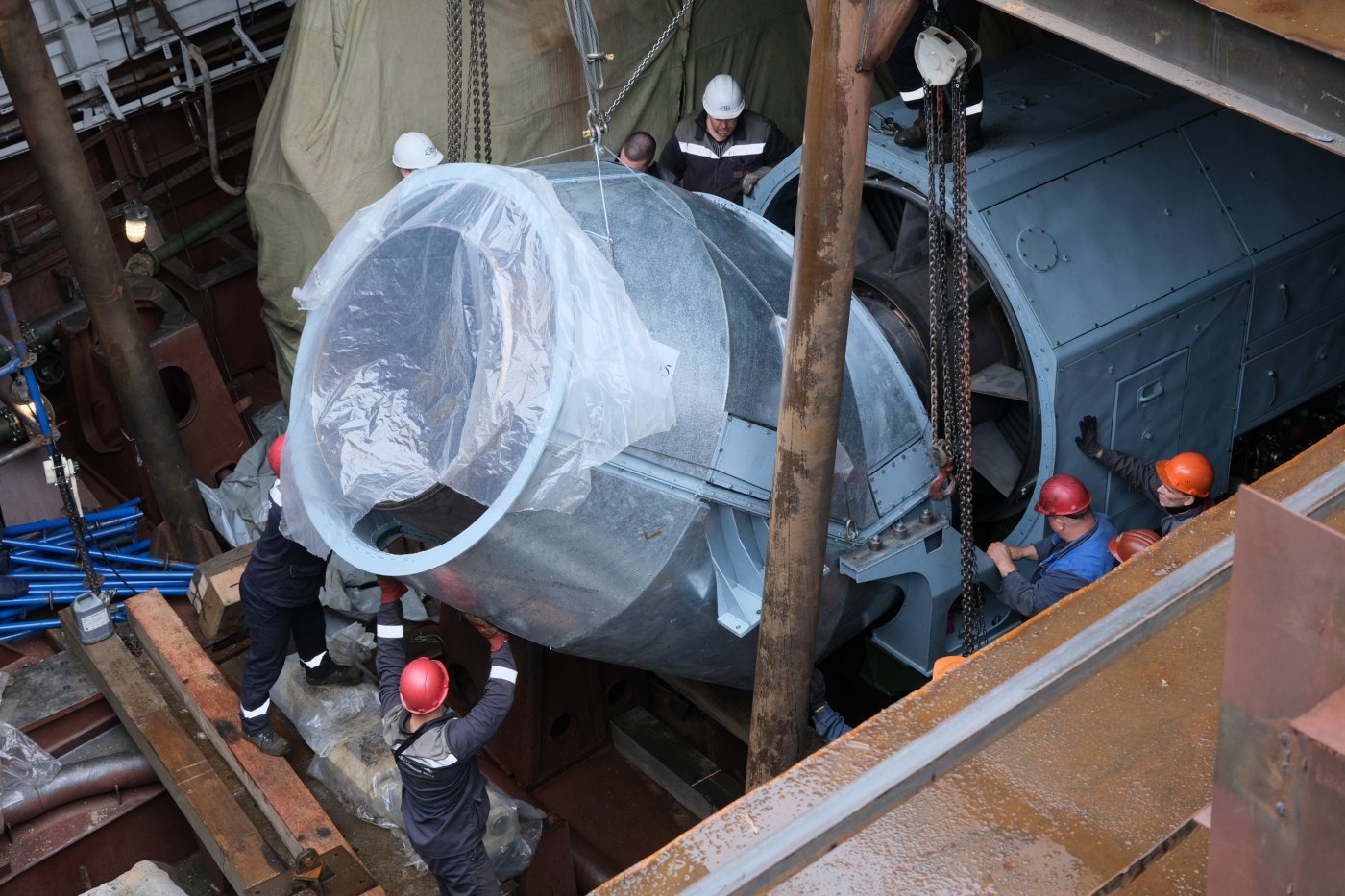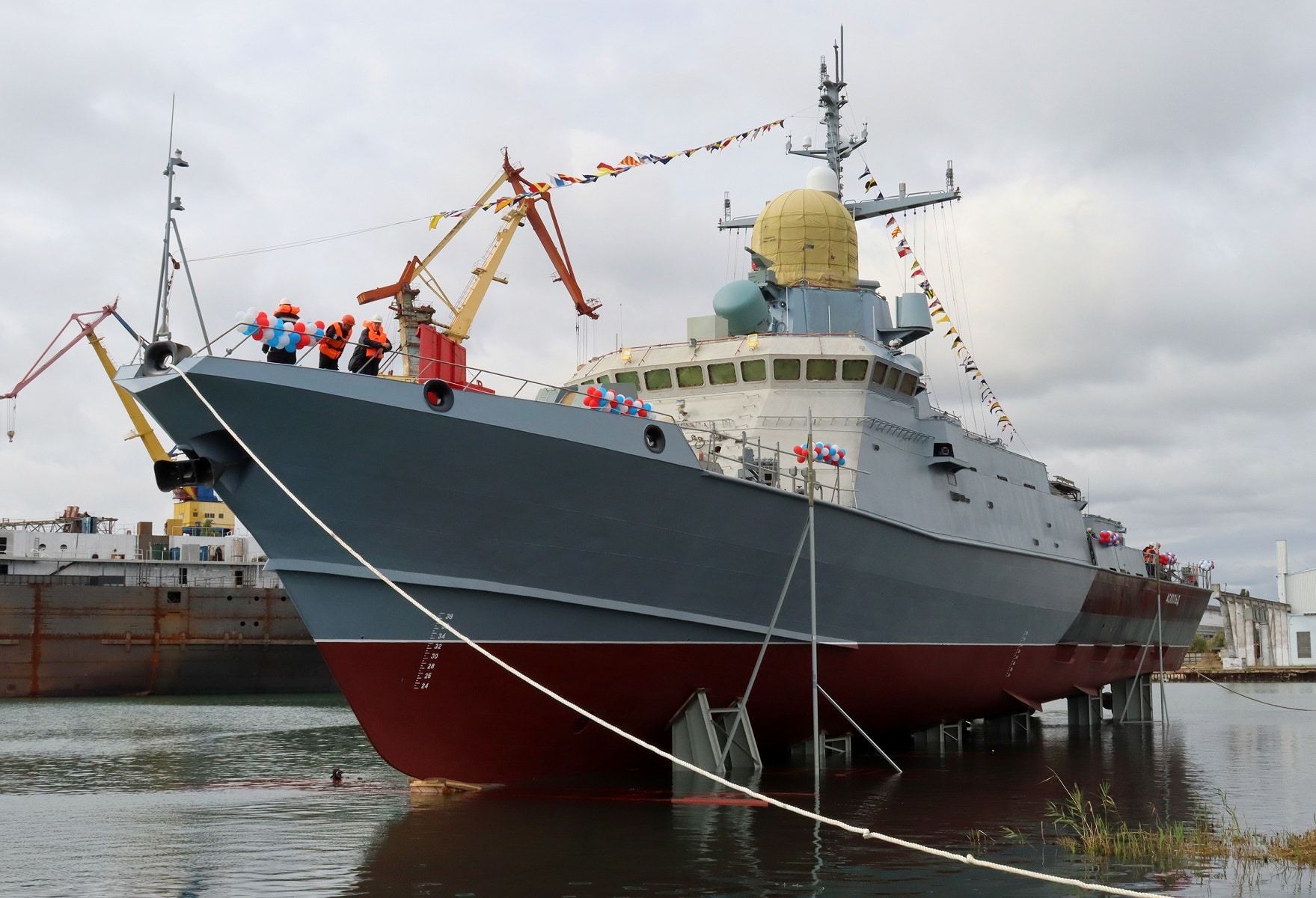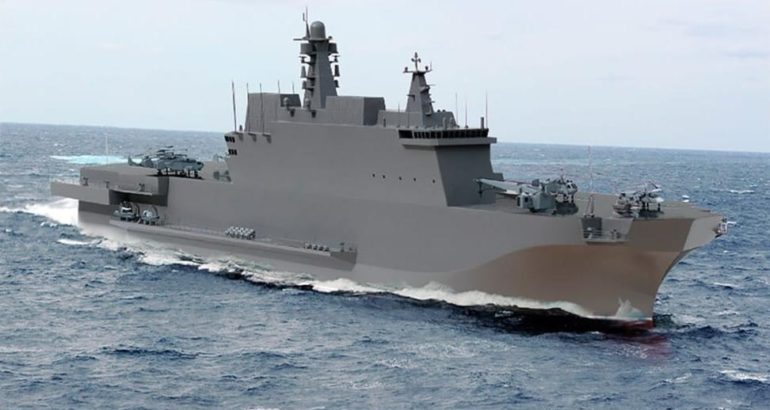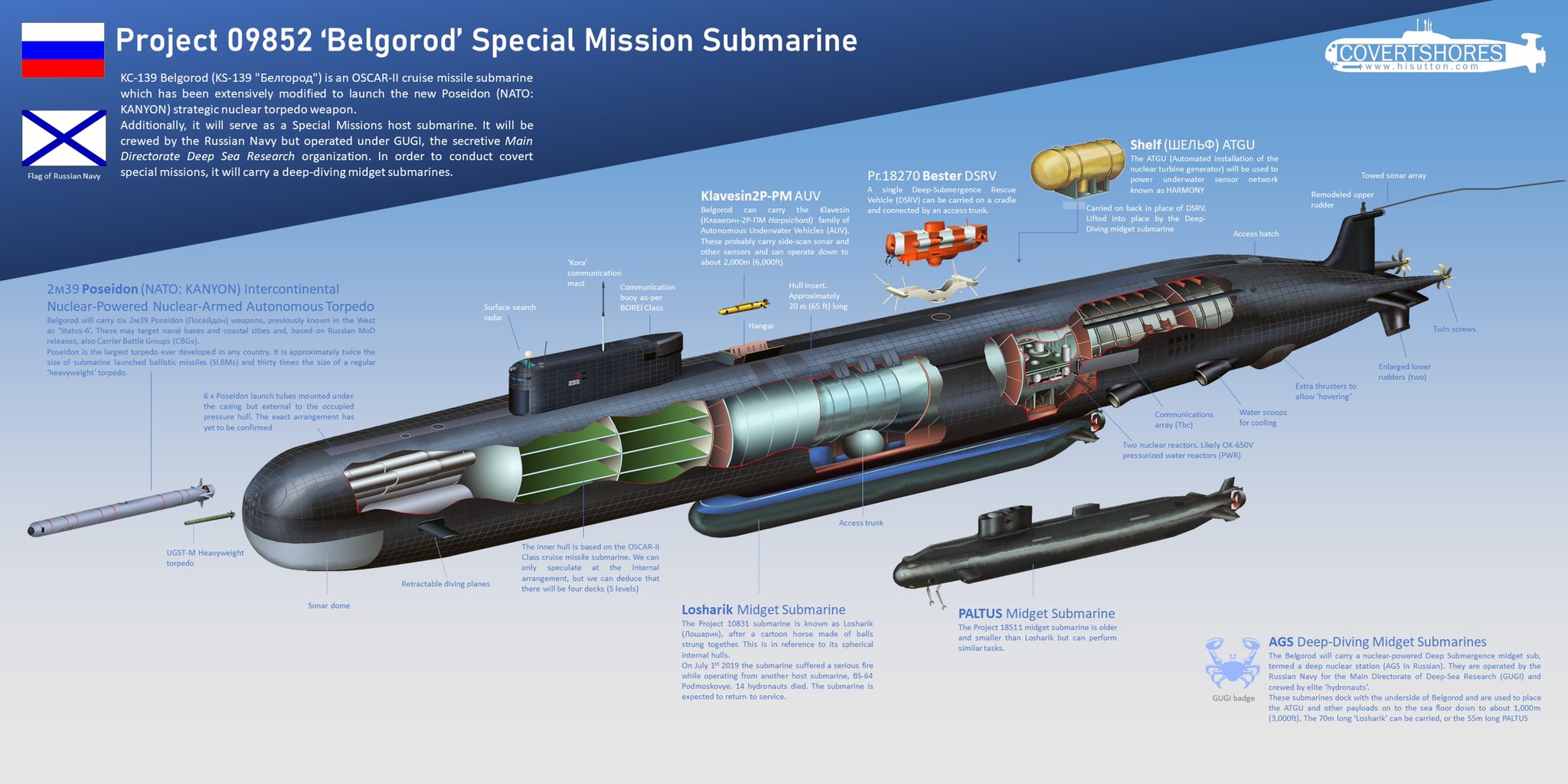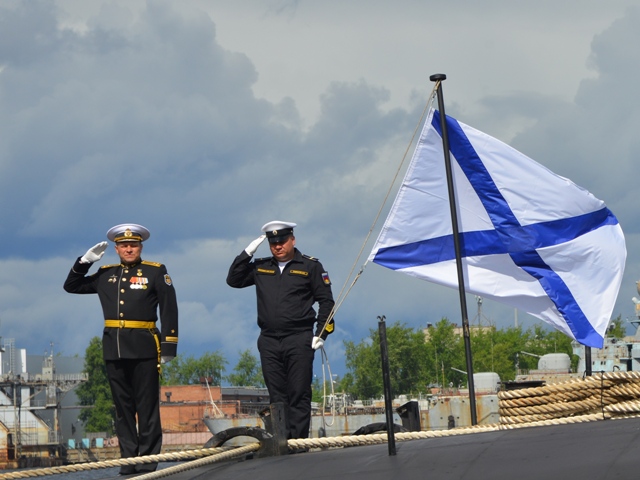Sevmash Shipyard in Severodvinsk floated the Krasnoyarsk Yasen-M-class SSGN of project 885M, TASS reports from the site.
Martin Manaranche 30 Jul 2021By TASS Russian news agency
“The plans for the submarine have been formed and the crew prepared. I am sure Sevmash will commission the SSGN on time.”
Russian Navy Commander in Chief Nikolai Yevmenov
Head of the United Shipbuilding Corporation (USC) Alexey Rakhmanov said Sevmash was working to accelerate nuclear submarine production by 9-14 months. “The shipyard has to decrease the construction time of serial submarines by 9-14 months,” he said adding the USC was assisting the shipyard.
Sevmash plans to launch three submarines by the end of the year. It is loaded for ten years, shipyard Director Mikhail Budnichenko said.
“We have to commission three submarines this year. There is work for ten years to come.”
Sevmash Shipyard Director Mikhail Budnichenko
The Navy has to receive the Novosibirsk SSGN of project 885M, the Knyaz Oleg Borey-A-class SSBN of project 955A, and the Belgorod special-designation nuclear submarine of project 09852 by the end of the year.
The Krasnoyarsk is the second serial submarine of project 885M. It was laid on July 27, 2014. The Russian Navy operates the Severodvinsk K-560 Yasen-class SSGN of project 885. It was laid by Sevmash on December 21, 1993, floated on June 15, 2010, and commissioned on July 17, 2014. The Navy also received the Kazan K-561 SSGN of project 885M. It was laid on July 24, 2009 and floated on March 31, 2017.
The Severodvinsk and the Kazan operate in the Northern fleet. The Novosibirsk first serial SSGN of project 885M was laid on July 26, 2013 and floated on December 25, 2019. It will be the first SSGN of the class in the Pacific fleet.
Sevmash is building another six SSGN of project 885M — the Krasnoyarsk, the Arkhangelsk (laid on March 19, 2015), the Perm (laid on July 29, 2016), the Ulyanovsk (laid on July 28, 2017), the Voronezh and the Vladivostok (both laid on July 20, 2020). The series of eight SSGN of project 885M is to be completed in 2028 when the Vladivostok joins the Navy.
-End-
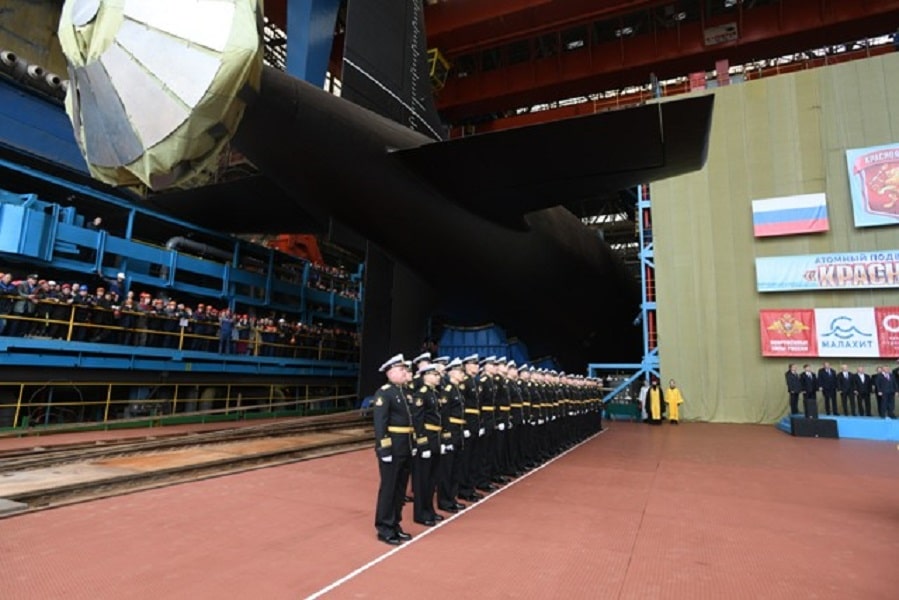
Sevmash Shipyard Launches Russian Navy Project 855M Krasnoyarsk SSGN - Naval News
Sevmash Shipyard in Severodvinsk floated the Krasnoyarsk Yasen-M-class SSGN of project 885M, TASS reports from the site.







